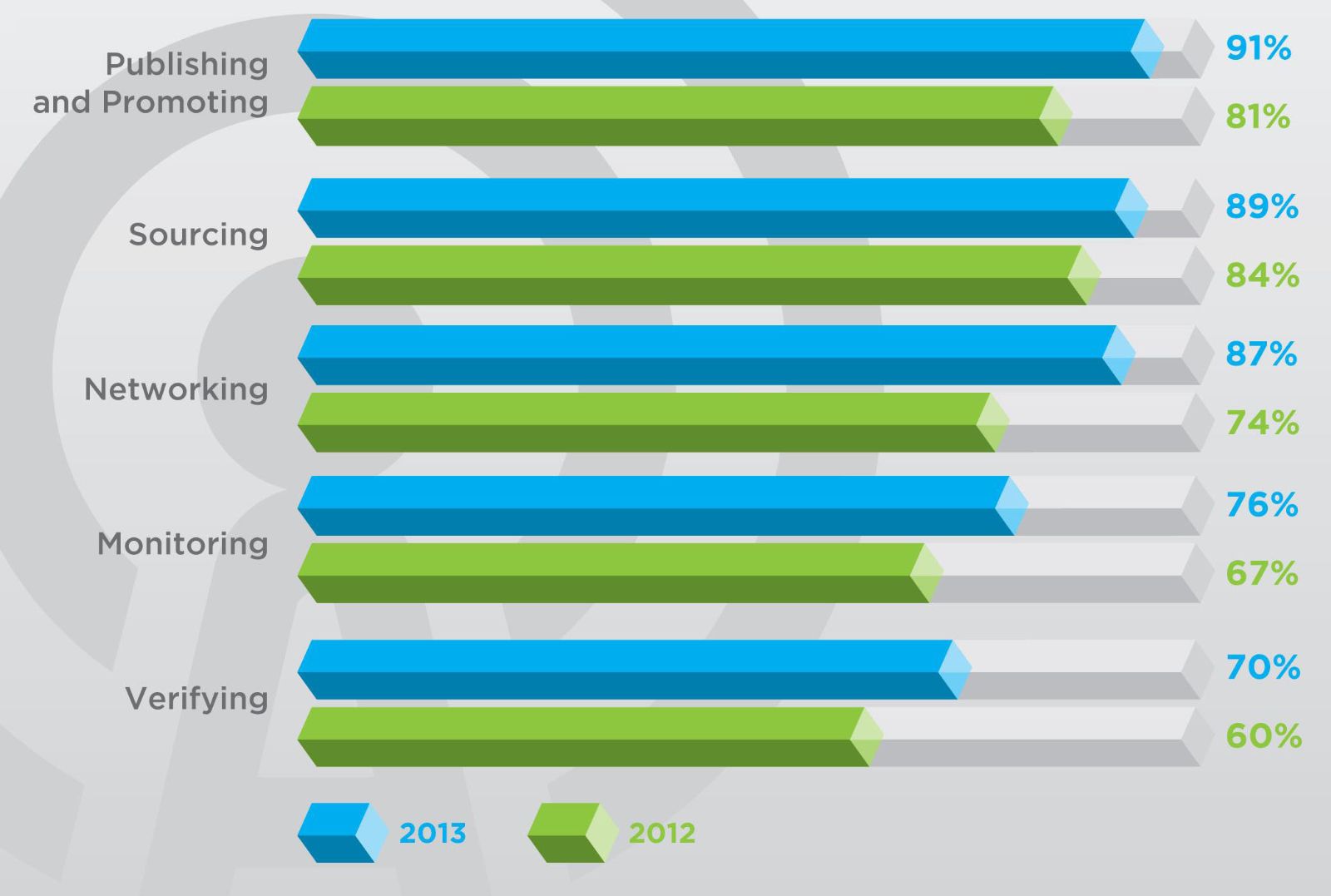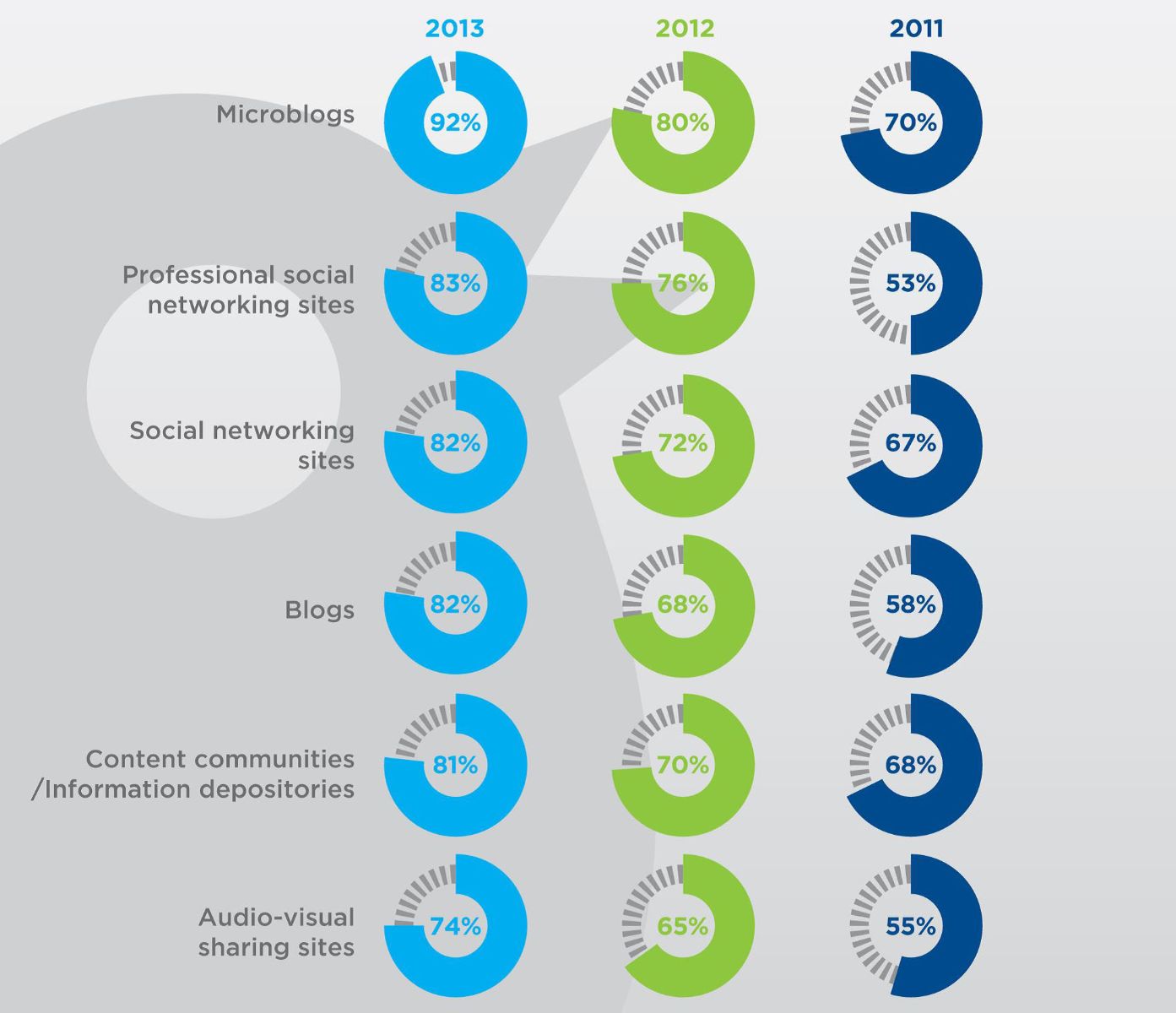A growing number of UK journalists prefer to be contacted via social media, according to the latest journalist/social media study by Cision in conjunction with Canterbury Christ Church University.
One third (30 per cent) of respondents chose social media as their preferred source of communication. Younger journalists had a higher preference than older professionals, and so did broadcasting and online journalists compared with those in print.
Contacting journalists directly through social media isn’t the only way to get their attention, as they rely heavily on social sites, particularly Twitter, for finding out and sharing information as well as networking.
The use of social media for professional tasks in a typical week (% per respondent):

Key findings from the research are:
- Social media is now an everyday professional tool with 96 per cent of UK journalists using it on a daily basis
- 42 per cent of UK journalists say that they would not be able to carry out their work without social media
- Twitter is proving to be the key social media tool for UK journalists with 92 per cent using it regularly for work. It is the most important social media tool for a variety of professional tasks
Kester Ford, head of product and marketing at Cision UK, points out that although the vast majority journalists use social media on a daily basis, the patterns of use vary greatly: “Nearly two-thirds of journalists use the tools for up to two hours a day and 11 per cent for more than four hours. The majority of them use at least two types of social media tools for professional tasks.”
The changes in the use of different social media tools in a typical week (% per respondent):

Discussing how journalists spend their time on social sites, Ford says: “The use of all main social media tools has risen, but professional social networks, such as LinkedIn, saw the largest increase (30 per cent) since 2011. The use of blogs has grown from 58 per cent in 2011 to 82 per cent in 2013. Social bookmarking sites are also becoming more important, although still less mainstream compared to more established forms. The use of these tools has risen from 20 per cent to 39 per cent since last year.”
Ford emphasises that the most important site is Twitter: “The tool which is proving to be the most essential for UK journalists is Twitter (microblogs). It was already the most popular tool in 2011 with 70 per cent of respondents using it for work in a typical week, but that figure increased to 92 per cent this year.”
Over recent years, not only are journalists using social sites more often, but they are using them for a wider variety of reasons. Ford says: “Professional use of the tools has diversified, as social media has evolved and become more segmented in its appeal. Publishing and promoting own content and sourcing information are the two most important reasons for social media use, a pattern that has remained stable over the last three years. But whereas last year, there was a slightly higher level of use for sourcing (84 per cent) compared to publishing and promoting (81 per cent), this year the trend was the opposite. Now, 91 per cent of journalists report that they use social media for publishing and promoting in a typical week compared to 89 per cent for sourcing.”
“Over the last 12 months, the largest increase was reported in relation to use for networking, which rose from 74 per cent to 87 per cent. This trend ties in with the increasing use of professional social networks over the same period. Social media is less significant for monitoring and verifying information, but even for these tasks over two-thirds of UK journalists apply these tools and the use of them has increased by 10 per cent.”
Background
Cision and Canterbury Christ Church University conducted an online survey about the use of, and attitudes toward, social media among journalists. Respondents were taken from Cision’s global media database. This year’s study received over 3,000 responses from journalists in 11 different countries: UK, US, Canada, Australia, France, Germany, Finland, Sweden, Italy, Spain and the Netherlands. Throughout the survey the term “journalist” is used to include other media professionals such as researchers and editors. The statistical analysis, based on a 95 per cent confidence interval, examined the differences and similarities between sub-populations of respondents. The types of professional social media users were developed using cluster analysis.
PR Masterclass: The Agency Growth Forum
Our experts will each give you a 20-minute Masterclass on what we've identified as the 11 most important elements in running a modern, profitable and successful PR firm.
Taking place on Wednesday 26th November in London, both virtual and in person tickets are available.
Tickets on sale now!
PR MasterclassIf you enjoyed this article, sign up for free to our twice weekly editorial alert.
We have six email alerts in total - covering ESG, internal comms, PR jobs and events. Enter your email address below to find out more:










